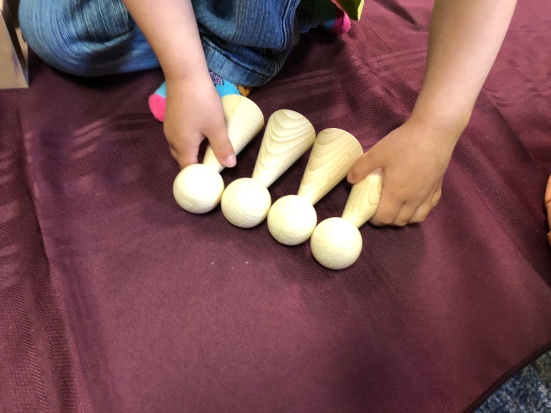By: Diane Kashin, Ed.D, RECE (with contributions from Cindy Green, RECE). This blog post has been ruminating with me for some time now. The process of pedagogical documentation is a new concept to many early childhood educators. According to Dahlberg and Moss (2008) “pedagogical documentation has its origins in the innovative and, today, world-famous municipal early childhood services in the Northern Italian city of Reggio Emilia” (p. 6). The Reggio Emilia Approach was developed after World War II and continues to inspire many throughout the world. It is now an expectation in my province according to the standards set by our regulatory college to document pedagogically.
Recently I was asked by the College of Early Childhood Educators to participate as an “expert” in a webinar on pedagogical documentation. I agreed under one condition. The condition being that they would include the voice of a practising registered early childhood educator. I was proud to share the experience with a former student and current toddler teacher, Laura Salau, RECE. She is the real expert. You can watch a video recording of the live webinar here:
We started the webinar by featuring Standard II: Curriculum and Pedagogy which clearly states that early childhood educators in Ontario should be knowledgeable about pedagogical documentation and practise documenting children’s learning.

This expectation of practice, will not come easy for some early childhood educators. We have all been trained to be objective observers of children. I vividly remember proudly submitting my very first observation assignment for grading as a beginning student, only to have it returned full of red pen corrections reminding me to avoid subjectivity and be more descriptive. In the decades that I taught early childhood education students, I avoided teaching the course with the observation assignments, but I would constantly hear about them! Students found them difficult and worked hard to become objective and descriptive. Yet, this is not what pedagogical documentation is all about! Wien (2011) suggests that:
In pedagogical documentation, teachers imagine or theorize understanding, present evidence of what they think they see, and check it against others’ analysis and interpretation, all of which can inform their decisions about what to offer children, thus influencing the design of curriculum.
Recently, with my colleague Cindy Green we facilitated a series on documentation for a large child care agency. It was necessary for it to be a four-part series so that we could support the educators in moving away from the descriptive to being interpretative. We wanted them to be at a place where they could make their professional knowledge visible.

Last month I had the opportunity to share some loose parts with a group of parents and children in northern Ontario. I brought a carload of open-ended materials and captured many memorable moments of engaged children. From these two images, I could start with a description of what I see. However, Hale and Tolisano (2018) suggest that “anyone can document a moment in time” but “documenting learning needs to be strategic and purposeful” (p. 4). Documenting should be used to make children’s learning visible in a way that can be interpreted for curriculum decision making. Educators are then in a position to wonder what direction and what materials might be intentionally proposed to children to deepen further learning and understanding.


It is not that important to say that the child is holding the wooden figure in a pincer grasp. It is also not necessary to say that the child is having fun or enjoying lining up the figures. Anyone can see that. How can these images be interpreted to demonstrate professional knowledge? What do they say about the child’s thinking, their use of symbolic play, their schema play? Pedagogical documentation holds with it many challenges including moving beyond description to interpretation. A step in the right direction would be to use it as a means to make professional knowledge visible by going beyond the fun and enjoyment to the development and the learning!
When creating pedagogical documentation, the educator needs to deduce and highlight the possible meaning inherent during the play. What might the child be trying to do and why? What is it about this material or experience that has peaked the child’s curiosity? The following questions in the Ontario Ministry of Education’s How Does Learning Happen? Ontario’s Pedagogy for the Early Years are designed to guide educators to think beyond the obvious:
- How are the children demonstrating they are competent and capable of complex thinking?
- How is a child’s current approach to a problem different from an earlier response?
- What questions and theories do children have about the world around them?
- How are children forming relationships with one another? (p. 22)
The pedagogical documentation process takes time, collaboration and reflection. Make it meaningful and joyful!


I am doing my Thesis on transitioning to digital communication with parents and am looking at documenting children’s learning
LikeLike
Pingback: LA DOMINACIÓN DEL DISCURSO DOMINANTE; BUSCANDO LA GRIETA A NUEVAS POSIBILIDADES. – Investigación Social y Educativa Desde una Perspectiva Crítica
Pingback: Building Relationships in Early Learning: One Tea Cup at a Time | Technology Rich Inquiry Based Research
Pingback: 📰 Read Write Respond #036 | Read Write Collect